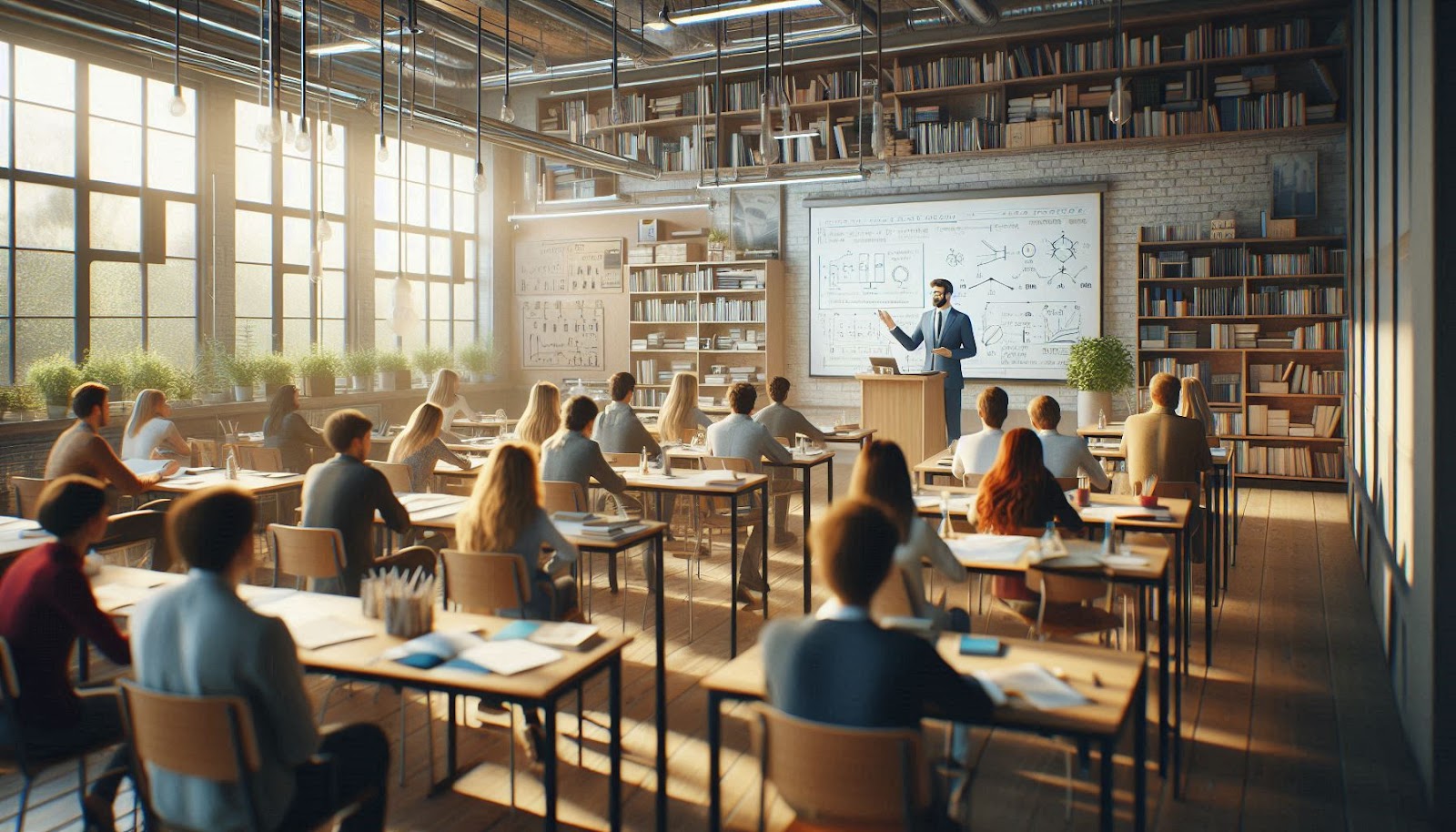The evolution of education in Dubai has created unprecedented opportunities for establishing world-class learning institutions. Finding the right plot in Dubai for an educational facility requires a deep understanding of both the emirate’s rapid development and the specific needs of modern educational environments. The city’s transformation into a global education hub has attracted significant investment, with over AED 4.5 billion dedicated to educational infrastructure development in 2024 alone. This comprehensive guide explores the intricate process of selecting and developing the ideal location for an educational institution in Dubai’s dynamic landscape.
Beyond the Traditional Campus: Reimagining Educational Landscapes
The concept of educational spaces in Dubai has undergone a radical transformation over the past decade. Traditional classroom-based layouts are giving way to innovative, multi-functional environments that foster collaborative learning and student engagement. Recent studies indicate that thoughtfully designed educational spaces can improve student performance by up to 25%. Dubai’s educational zones now emphasize the integration of indoor and outdoor learning areas, with a minimum requirement of 30% green space in new school developments. These spaces are designed to accommodate various learning styles while promoting sustainability and environmental awareness.
The architectural evolution of educational facilities in Dubai reflects a deep understanding of the region’s climate and cultural context. Modern designs incorporate traditional Arabic architectural elements while embracing cutting-edge sustainable technologies. Schools built in the last five years have shown a 40% reduction in energy consumption compared to older facilities, largely due to innovative design approaches and smart building systems.
Contemporary educational spaces in Dubai are increasingly incorporating flexible learning zones that can be reconfigured based on educational needs. This adaptability has proven crucial, with studies showing that flexible learning spaces can increase student engagement by up to 35%. These spaces often include innovation labs, maker spaces, and collaborative areas that support project-based learning and cross-disciplinary activities.
The integration of technology infrastructure has become a cornerstone of modern educational facility design. New developments must allocate at least 15% of their total space to dedicated technology zones, including digital libraries, computer labs, and smart classrooms. This technological integration supports blended learning approaches and prepares students for an increasingly digital future.
The Science of Site Selection: Geological and Environmental Considerations
Selecting an appropriate plot for an educational facility involves complex geological assessments unique to Dubai’s desert environment. Soil composition analysis reveals that approximately 60% of Dubai’s developable land requires significant ground improvement before construction can begin. Recent geological surveys have identified optimal zones with naturally stable soil conditions, reducing foundation costs by up to 30%.
Environmental impact assessments have become increasingly stringent, with new regulations requiring educational facilities to maintain a minimum Green Building Rating of Gold. This includes comprehensive studies of wind patterns, solar exposure, and natural drainage systems. Dubai’s unique climate necessitates careful consideration of orientation and building placement, with optimal positioning potentially reducing cooling costs by up to 25%.
Groundwater levels and soil salinity present unique challenges in certain areas of Dubai. Recent environmental studies have shown that plots in newly developed areas often require extensive soil treatment and drainage systems. However, these investments typically result in long-term operational cost savings of up to 40% through reduced maintenance requirements.
The implementation of sustainable landscaping strategies has become mandatory for educational facilities, with requirements for drought-resistant vegetation and water-efficient irrigation systems. Studies indicate that properly designed green spaces can reduce ambient temperatures by up to 5 degrees Celsius, significantly impacting energy efficiency and outdoor usability.
Navigating the Regulatory Maze: Understanding Dubai’s Educational Zoning Laws
Dubai’s educational zoning regulations have evolved significantly, with the latest updates in 2024 introducing new requirements for plot selection and development. The minimum plot size for K-12 schools has been standardized at 30,000 square meters, with specific requirements for different educational levels. These regulations ensure adequate space for future expansion while maintaining optimal student density ratios.
Setback requirements vary based on the facility’s location and adjacent developments. Recent zoning updates mandate increased setbacks near residential areas, typically requiring a minimum of 20 meters to reduce noise impact and ensure privacy. Additionally, new regulations require dedicated drop-off zones capable of accommodating at least 15% of the student population during peak hours.
Height restrictions and floor area ratios are carefully regulated to maintain neighborhood aesthetics and ensure adequate natural light penetration. Current regulations typically limit educational facilities to G+3 floors, with specific provisions for recreational facilities on rooftops. These restrictions have led to innovative architectural solutions that maximize space utilization while complying with regulatory requirements.
Parking requirements have been updated to reflect changing transportation patterns, with new regulations mandating one parking space per 40 square meters of built-up area. Additional provisions for electric vehicle charging stations and bicycle parking have been introduced, promoting sustainable transportation options.

Urban Integration and Accessibility: Creating Connected Learning Communities
The strategic placement of educational facilities within Dubai’s urban fabric requires careful consideration of connectivity and community integration. Recent urban planning guidelines emphasize the importance of creating educational clusters that benefit from shared resources and infrastructure. Studies show that well-integrated educational facilities can increase property values in surrounding areas by up to 15%.
Transportation infrastructure plays a crucial role in site selection, with new requirements stipulating that educational facilities must be located within 500 meters of public transportation nodes. Traffic impact studies have become more comprehensive, requiring detailed analysis of peak hour movements and potential mitigation strategies. Recent data indicates that properly planned access routes can reduce morning peak traffic congestion by up to 30%.
The concept of community integration has evolved to include shared facilities and public spaces. New educational developments are required to allocate at least 20% of their recreational facilities for community use during non-school hours. This approach has shown to increase community engagement and support for educational institutions while optimizing resource utilization.
Accessibility considerations now extend beyond physical access to include digital connectivity requirements. Educational plots must demonstrate access to high-speed fiber optic networks and adequate cellular coverage. Recent regulations mandate redundant connectivity options to ensure uninterrupted digital learning capabilities.
Economic Viability and Investment Returns: A Data-Driven Approach
The financial aspects of educational plot selection in Dubai require sophisticated analysis of both immediate and long-term costs. Recent market analysis indicates that land prices for educational plots have appreciated by an average of 12% annually over the past five years, making timing and location crucial for investment returns.
Development costs vary significantly based on location and site conditions, with recent projects ranging from AED 2,500 to AED 4,000 per square meter for basic infrastructure development. However, strategic location selection can result in operational cost savings of up to 25% over the facility’s lifecycle through reduced transportation and utility expenses.
The impact of location on enrollment potential and tuition revenue must be carefully evaluated. Demographic studies show that educational facilities located within emerging residential communities can achieve full enrollment up to 40% faster than those in established areas. This accelerated enrollment trajectory significantly impacts the project’s financial viability.
Return on investment calculations must consider multiple revenue streams beyond traditional tuition fees. Well-designed facilities can generate additional income through community programs, facility rentals, and specialized educational services. Recent data suggests that optimally located educational facilities can achieve positive cash flow within 4-5 years of operation.
Sustainable Development and Future-Proofing: Creating Tomorrow’s Learning Spaces
The implementation of sustainable development practices in educational facility planning has become increasingly sophisticated. New projects must achieve a minimum of 30% energy efficiency improvement over baseline buildings, with some pioneering institutions achieving up to 50% reduction in energy consumption through innovative design and technology integration.
Water conservation strategies have become central to plot development, with requirements for on-site treatment and recycling systems. Recent projects have demonstrated the ability to reduce water consumption by up to 40% through the implementation of smart irrigation systems and water-efficient fixtures. These initiatives not only reduce operational costs but also serve as educational tools for environmental awareness.
The concept of future-proofing educational facilities extends to the incorporation of flexible spaces that can adapt to evolving educational methodologies. Recent studies indicate that facilities designed with modular architecture can reduce renovation costs by up to 60% when implementing major program changes.
Climate resilience has become a critical consideration in plot selection and development. New facilities must demonstrate the ability to maintain operations during extreme weather events and incorporate features that mitigate the impact of rising temperatures. This includes the implementation of advanced building management systems and passive cooling strategies that can maintain comfortable learning environments while minimizing energy consumption.
